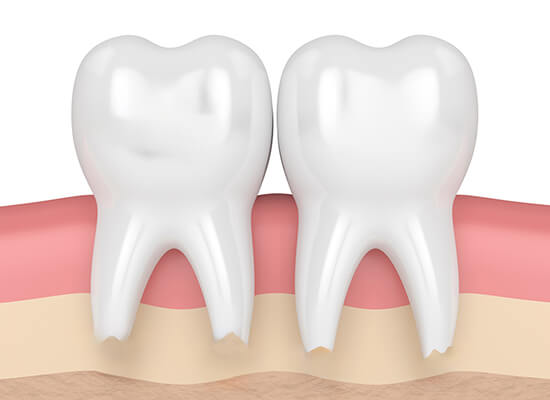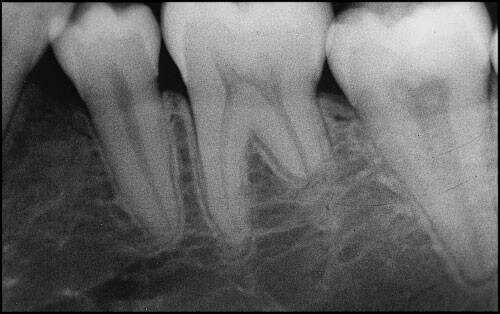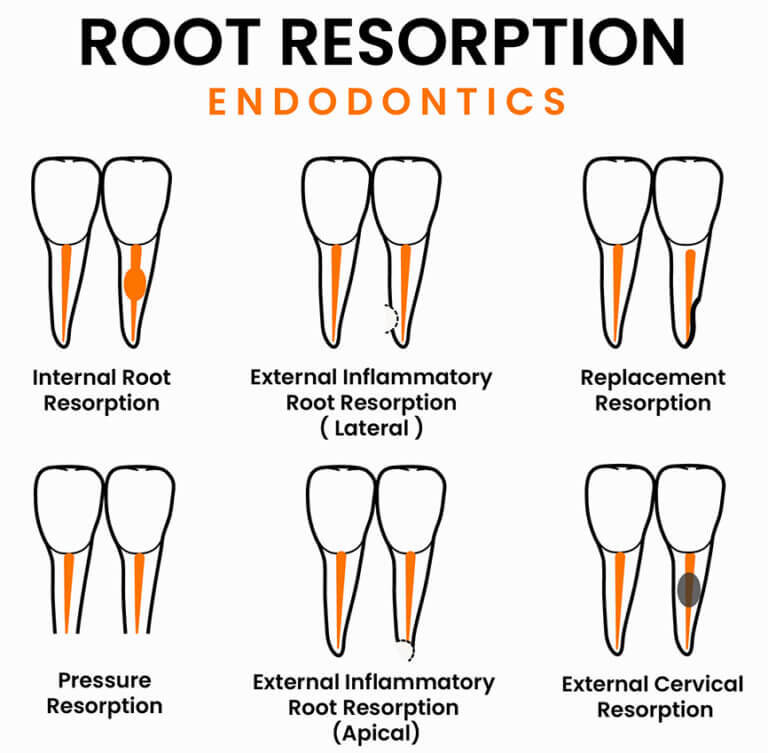Root Resorption

What Is Root Resorption?
Root resorption is a dental condition where the root structure of a tooth is broken down and absorbed by the surrounding bone or tissues. It’s a silent threat that can compromise tooth stability if not identified and treated early. Understanding the causes, types, and treatment options for root resorption is essential for maintaining long-term dental health.
Before you contact a Toronto dentist to examine possible root resorption, there are some things you should know as a patient:
- Causes Of Root Resorption
- Signs And Symptoms Of Root Resorption
- Types of Root Resorption
- Treatment Options For Root Resorption
- Frequently Asked Questions About Root Resorption
If you have questions about Root Resorption or other dental problems, please contact us for more information.
Causes of Root Resorption
Several factors can contribute to root resorption, including:
- Trauma: Injury to a tooth can trigger resorption as the body reacts to damage.
- Orthodontic Treatment: Excessive force on teeth can lead to pressure-induced resorption.
- Infection or Inflammation: Chronic infections around the tooth can cause tissue damage and resorption.
- Impacted Teeth: Pressure from impacted teeth, like wisdom teeth, may cause resorption of adjacent roots.
- Systemic Conditions: Rarely, certain systemic diseases or medications can contribute to resorption.
Identifying the underlying cause of root resorption is key to determining the best treatment approach and preserving natural teeth. If you have further questions about root resorption, please contact us.

Signs and Symptoms of Root Resorption
Root resorption is often asymptomatic until advanced stages. However, possible signs include:
- Tooth Mobility: Affected teeth may feel loose.
- Discoloration: Teeth may appear pinkish or darker due to internal resorption.
- Pain or Discomfort: Occasional sensitivity or mild pain, especially with internal resorption.
- Radiographic Changes: X-rays may reveal root shortening or irregularities.
Early detection of root resorption through routine dental exams and X-rays is vital for preserving affected teeth. If you have further questions about signs and symptoms of root resorption, please contact us.
Types of Root Resorption
Root resorption is classified based on its origin and pattern:
- Internal Root Resorption: Occurs inside the tooth’s pulp chamber, often due to inflammation or trauma.
- External Root Resorption: Affects the outer surface of the root, commonly caused by orthodontic forces, trauma, or infection.
- Replacement Resorption: Bone tissue gradually replaces root structure, often following severe trauma or ankylosis.
- Pressure Resorption: Results from mechanical pressure, such as from orthodontic treatment or impacted teeth.
Understanding the type of resorption helps dentists choose the most effective treatment and prevent further damage. If you have further questions about various types of root resorption, please contact us.

Treatment Options for Root Resorption
The choice of treatment depends on the extent and type of resorption:
- Root Canal Therapy: Effective for internal root resorption to remove inflamed tissue and seal the canal.
- Apicoectomy (Root-End Surgery): When standard root canal therapy isn’t sufficient, apicoectomy may be considered. This involves removing the root tip and sealing the area to halt resorption.
- Tooth Extraction: If the tooth’s structure is compromised, extraction followed by a dental implant or bridge may be necessary.
Timely treatment can prevent tooth loss and maintain oral health, so consult your dentist if you suspect root resorption. For more information about root Resorption treatment options, please contact us.
Frequently Asked Questions About Root Resorption
- Can root resorption be reversed?
No, resorption cannot be reversed, but treatment can halt its progression and save the tooth if detected early.
- Is root resorption painful?
Not usually in early stages, but it can cause discomfort or sensitivity as it advances.
- How is root resorption diagnosed?
X-rays and CBCT scans are essential for detecting and evaluating the extent of resorption.
- Can orthodontic treatment cause root resorption?
Yes, especially when excessive force is applied over long periods. Careful planning minimizes this risk.
If you have further questions about root resorption or want to explore treatment options, contact us at Atlas Dental today to book an expert evaluation.

